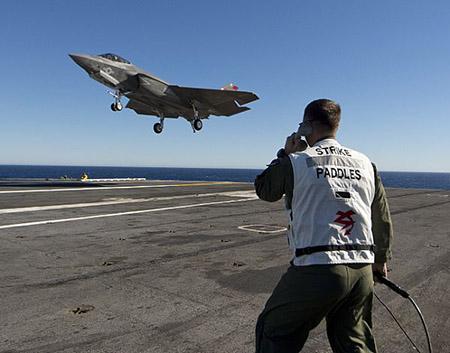The Navy, unlike the Air Force, has unmanned unmanned aircraft (UAVs) online, but Navy Secretary Ray Mabus, it was clear: "The F-35 will do great things, but the future is Unmanned. Unmanned systems, especially autonomous ones, will become the norm in future operating theaters ".
Mabus added. "We're looking forward to having the F-35. The hunt will be with us as far as 2040 / 2050, but it will be the last hunt for humans on board that the Navy will acquire."
"Unmanned aircraft can act without the classic physical limitations of the human counterpart, which means an air force that can perform riskier or unprecedented actions and maneuvers, a fast, fast and lethal naval aviation."
These words do not come without warning. The Navy has, in fact, recently created a new department, similar to that which cares for all air missions, but devoted to the unmanned counterpart. The new military branch will lay the foundations for future unmanned missions.
To date, US Navy UAVs have operated in ISR missions (intelligence, surveillance and reconnaissance), but in a future not so remote, hunters embarked on will also carry out missions and aerial support in complex war environments.
.jpg) Similar to the F-35, the Navy's Unmanned Carrier-Launched Airborne Surveillance-Strike (UCLASS) program has been delayed and has grown out of proportion due to the constant changes imposed.
Similar to the F-35, the Navy's Unmanned Carrier-Launched Airborne Surveillance-Strike (UCLASS) program has been delayed and has grown out of proportion due to the constant changes imposed.
Currently, Boeing, General Atomics, Lockheed Martin and Northrop Grumman are working on four different prototypes that the Navy might one day decide to take to replace the human riders.
Meanwhile, bad news continues for the F-35. In the last congressional hearing, it was confirmed that the current version of the fighter, that is, that in two months will equip the Marine, suffers from false alarms equal to 80%. The ALIS logistics system, a software implemented in the hunt that should "check and suggest" the platform, has a false alarm rate equal to 80%.
The ALIS problem is just the least of the problems highlighted by the Department of Defense's operational test director, Michael Gilmore (v.articolo). The Pentagon plans to intensify F-35 production by 24 hunting in 2015 at 120 in 2021.
Translated into figures: this boost to production, according to GAO, will require an average of 12,7 billion a year more for 20 years.
Franco Iacch
.jpg)
(photo: US Navy / Lockheed Martin)












